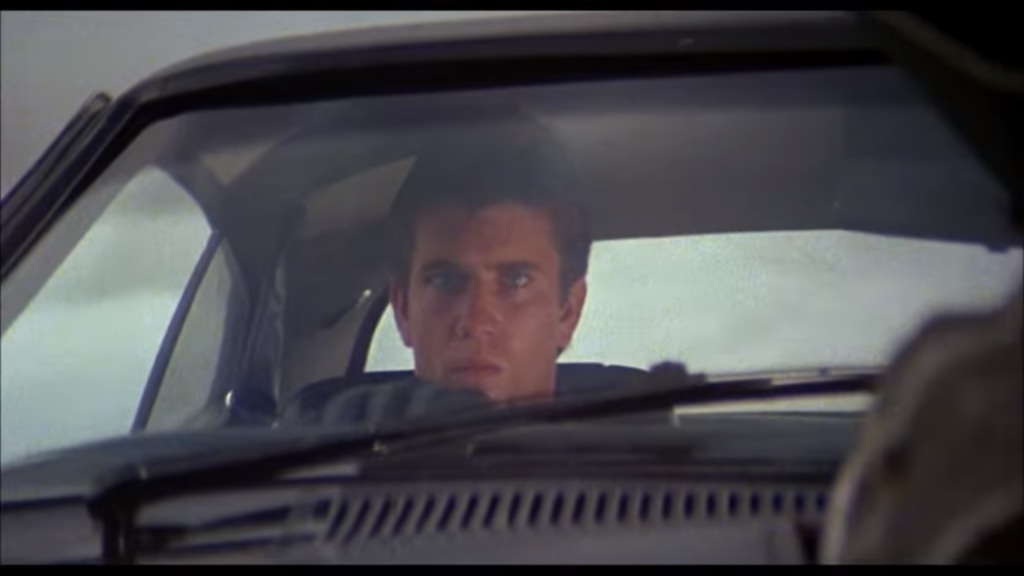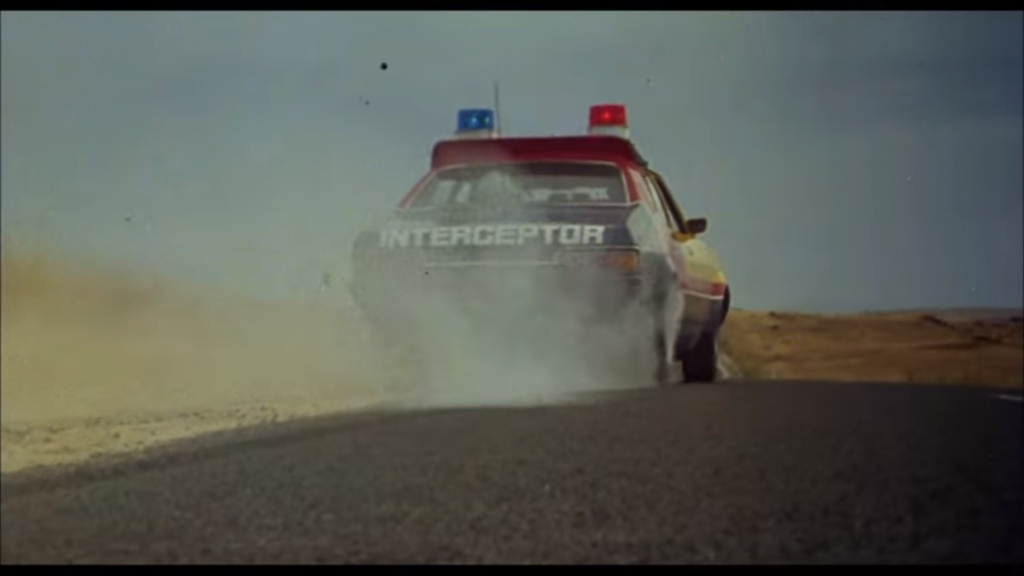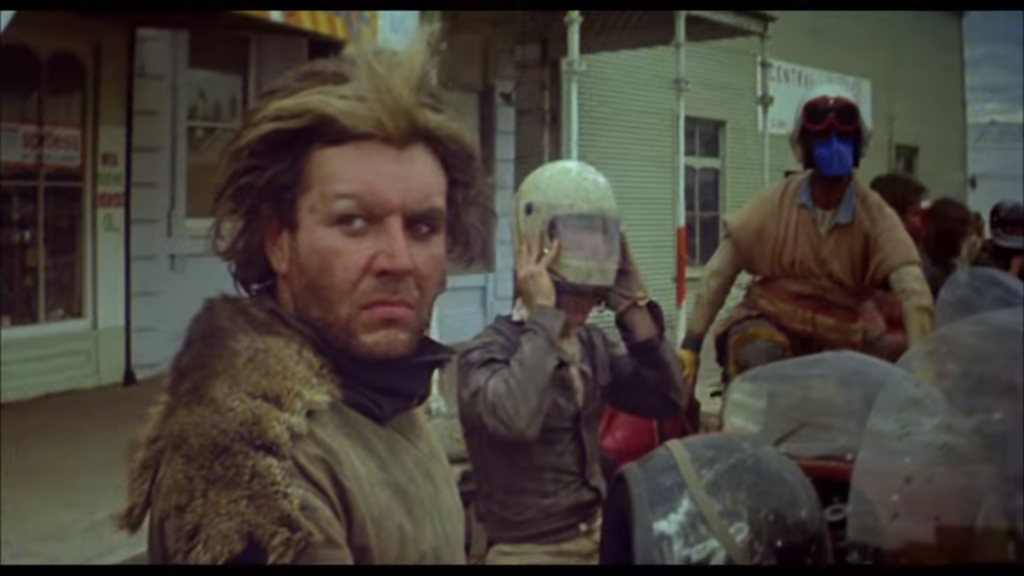Mad Max is a dystopian action-adventure thriller movie set in Melbourne, Australia. It was directed by George Miller and written by Miller, Byron Kennedy, and James McCausland. The film was released in 1979 to mixed reviews, but things weren’t as dire as they first seemed for the Australian flick. With its small budget of around 400 thousand Australian dollars, Mad Max went on to gross over 5 million at the Australian box office, and over 100 million US dollars worldwide, becoming the most profitable movie ever made at the time.
Mel Gibson stars as the titular character, Max Rockatansky, Joanne Samuel portrays Jessie, Hugh Keays-Byrne plays Toecutter, Tim Burns plays Johnny the Boy, and Steve Bisley plays Jim Goose. Mad Max received four wins in the Australian Film Institute awards of 1979, in the categories of Best Original Music Score, Best Achievement in Sound, Best Achievement in Editing and Stunt Work. It also received a further four nominations for Best Film, Best Director, Best Original Screenplay and Best Actor in a Supporting Role for Hugh Keays-Byrne.
Mad Max spawned two sequels, Mad Max 2: Road Warrior and Mad Max: Beyond Thunderdome, released in 1981 and 1985, respectively. The franchise was also rebooted with a film called Mad Max: Fury Road in 2015. With how culturally relevant the movies have become now, you’ve likely seen bits from them, and you’ve surely at least heard of them. If you just decided to give the franchise a proper watch now, you might be coming into the original Mad Max movie expecting to see a post-apocalyptic wasteland, in which its mutant inhabitants find themselves in constant conflict over survival. This is precisely what Mad Max 2: Road Warrior and all further sequels are about, but not this film.

In this film, we follow Max, a police officer working for the Main Force Patrol in Melbourne. The unit’s primary focus is with motorcycle gangs. One such gang member was being held in custody, but he makes a violent escape, and Max’s unit follows him. The criminal dies during the pursuit, and the MFP is in fear of his whole gang coming to seek revenge. One of Max’s best friends on the force is gruesomely injured in a violent altercation with the gang, making Max lose faith in the force, and he resigns.
As Max goes on vacation with his family, things get even more heated. The gang runs into them, and a line is crossed. Max is filled with unyielding rage, going on a murderous rampage against the gang members. He puts on his uniform and, quite fittingly, steals the Pursuit Special, the vehicle that once belonged to the gang member from the start of the film. Then, he picks the gang off, one member at a time. The film’s vague ending allowed it to tie directly into its sequels, and as already described, the franchise takes a dramatic turn following its first entry.

The film’s plot is relatively simple, leaving lots of room for its sequels to fill with context and setup. For instance, it’s never explored in the first film that the ongoing chaos is partly the result of a global crisis, and that the film’s version of Australia is teetering on the brink of total societal collapse. Yet, even with such explanations missing from the film, the plot is convincing, and the action is an absolute sensory overload. Furthermore, the film’s symbolism that improves its overall perception. Max not only uses a car belonging to the gang to wipe the gang out, but the ways in which he dishes out punishment is reflective of what the gang had done earlier in the film, culminating in the final gang member killing, which mirrors the events that made Max want to quit the force.
And finally, the way that dialogue and action are balanced is quite unique. Most of the film’s dialogue takes place in its first half, when Max is still a police officer. The more intense things get, the less talking there is. Max barely speaks during this the film’s third act, putting greater emphasis on the spectacular action scenes unfolding on screen. Only crazed laughter and screams are left to accompany the film’s score. And then, the film ends with a breaking of silence, as a gang member pleads with Max. And Max remains silent, yet not for the same reasons that a typical stoic action hero stays silent. He isn’t calm and collected in the face of danger, but a broken man; now that he’s taken to the path of destruction, there’s no going back for him. Even with his vengeance complete, he simply cannot stop.

Max doesn’t “get the girl”, he doesn’t even get the recognition for “saving the day”. In the end, he’s a murderer, just like the gang members that pushed him onto this path. He forgoes all that he once stood for as a police officer, and a law-abiding citizen, a family man. This is all made clear in that last scene. Instead of taking the moral high ground over his last victim, bringing the completely powerless man to the police, he decides to give his story a violent and unremorseful ending. Instead of the positive character arc we’re used to seeing in action flicks nowadays, Max becomes completely unrecognizable, totally unfeeling, by the movie’s end.
And that’s precisely what’s so special about this movie in my opinion. It’s filled to the brim with action, and utterly unapologetic about it. While setting aside dialogue and worldbuilding might have been a major flaw in another title, it lets this film acquire a frenetic atmosphere that benefits the film’s grip on the viewer. Mad Max is a thrilling action movie to watch, and I can only recommend you watch it yourself.
If you think you may have missed something, please click on the button below to find out all about your favorite movie or series.
